

My first exposure to the horrors of the Holocaust was when I was a young boy, certainly still aged in single figures, at my Granny Millie’s flat in Waverley, Johannesburg. She had a book on the liberation of Bergen-Belsen and I to this day vividly remember being compelled by those grotesque images the book contained.
This was the beginning of a life long fascination around World War II in general and the genocide of European Jewry in particular. My descendant connection to Lithuania became an added interest and this was given greater traction with the research undertaken by my cousin Linda Mischal (Garrun) of Herzlyia, Israel.
Our journey began around late 2009 when I began an internal agitation to go on what I would describe as a Roots and Identity trip to Eastern Europe. It took a few years of planning; research and false starts before June/July 2012 became a convenient time for Family Garrun to undertake this adventure.
LITHUANIA – ROOTS AND GRAVESTONES
It was a cool June afternoon when we arrived in Vilnius and our Program began with a tour of some of the 100 or so memorable sites that make up the “Jerusalem of Lithuania” which is what Vilnius was referred to as a major center of Torah study and Jewish life from the 18th Century on.
From the lanes of the Medieval Jewish Quarter to the remnants of the Ghettos and the Memorial to the great sage – the Vilna Goan , the presence of a wonderful Jewish legacy is very evident in Vilnius where a Community of around 1,000 survives from a pre-Holocaust population of 80,000.
Among the still functioning sites that survived both the Nazis and the Soviets are the Choral Synagogue (circa 1903) and the Suderves Jewish Cemetery. The Synagogue is presided over by an American Chabad Rabbi and Matthew and myself laid tefillin at what is still a regular Cantorial venue.
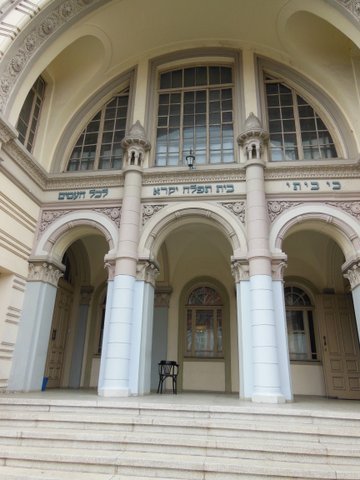
With the first Jews being buried being those who died in the Vilnius Ghetto, the Suderves Cemetery proved to be a most intruiging place. Via the Cemetery Registry we managed to locate the gravestones of one “Garun” and two “Garunas” – these being the closest to the current spelling. In fact the records indicate that Garun was the spelling during the Lithuanian period and it only became “Garrun” ex–Lithuania. Liuba Garun was born in 1895 and died 8 August 1963. We found the grave site with the gravestone covered by grass and sand. Moving around the Cemetery are these woman who clean gravestones professionally (including having business cards). They are employed by mostly American Litvaks who pay them annual retainers to keep family grave sites clean and tidy. Our guide organized a lady who cleaned and scrubbed to uncover our Garun gravestone which turned out to have a brief inscription in Russian. So we now have some material facts to investigate further.
The two Garunas gravestones were found in good condition and recorded. I do have my doubts about any family connection but will include these individuals in our investigations.
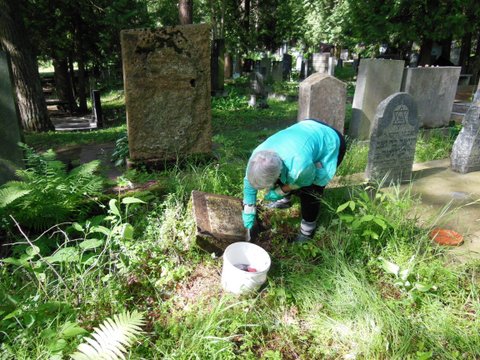
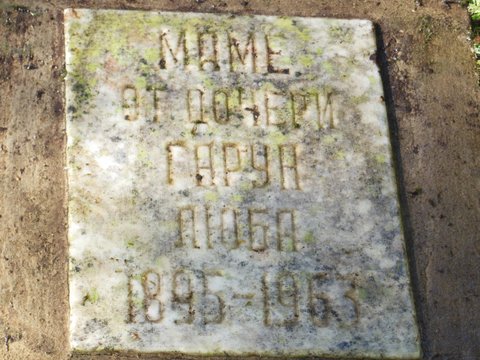
Our trip to Seta/Shat took about 2 hours in rainy conditions. Situated in rural Lithuania, the Garrun Shtetl has very few remnants of its Jewish past. However with good foresight our guide organized the services of the local High School Principal (called Director) who was most helpful in showing us the sites that remain. Of most interest was the place of the Jewish Cemetery which had its last burial in 1941. The cemetery was erased in 1949 by the Soviets with the tombstones being used as building material. This incidentally was common practice by both the Nazis and Soviets and one comes across this phenomena at different places and with different motives across eastern Europe.
This would therefore be the place that the Garrun ancestors would have been buried and therefore the family and my only tangible link to our Litvak heritage. So we stood on the mound where in the vicinity Great Grandfather Yitchak (Born 1846); Great, Great Grandfather Girsh (Born 1816) and Great, Great, Great Grandfather Itsek (Born 1780-90) are at eternal rest.
There is today a Memorial Stone with an inscription in Yiddish and Lithuanian that says “at this place till 1941 was the Jewish cemetery of Shat”
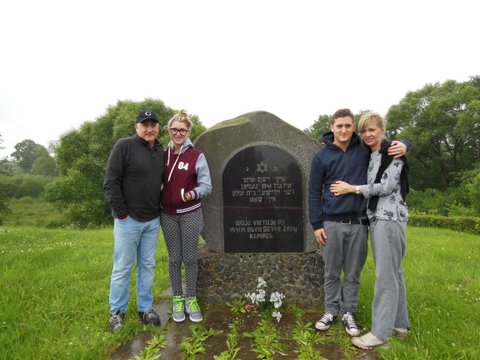
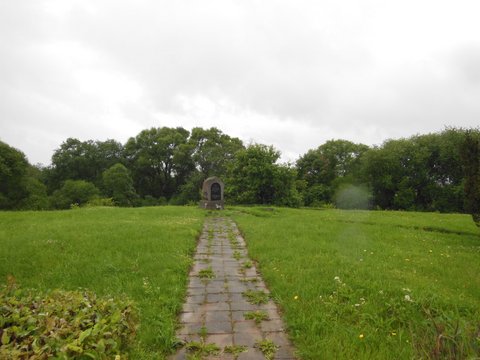
Attached to what is now a modern High School is the original Beit HaMidrash in a complete state of disrepair. In and around Shat are still some typical wooden houses dating back to shtetl times and it is not difficult to connect them with the few archival photos that remain of pre-war Shat.
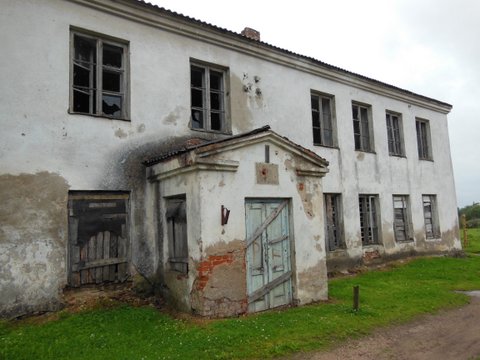
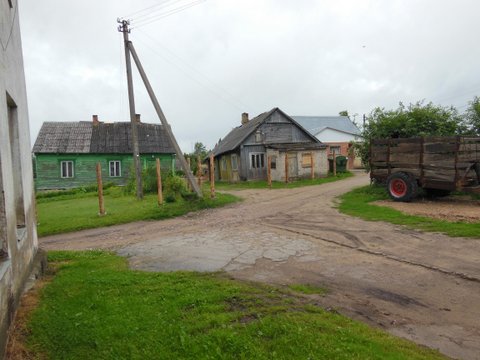
We now embarked on what was the most trying leg of our visit to our Litvak past. Witness was to be made to the extinguishing of Jewish life in Shat and surrounding shtetls. Those not murdered on the spot were trucked to the larger town of Keidan some 17km away where a massive pit awaited. During August 1941 over 2000 Jews of Seta and Keidan were shot and buried in this mass grave. Six Sheta Jews survived, notable among them being cousin Avraham Garun who fought the Nazis in the Red Army. Sickening was the fact that the most willing and brutal executioners were local Lithuanians leaving one with a sense of disquiet whilst engaging with present day Lithuanians.
There is a memorial at this mass grave with a large metal wall depicting all the victims names – the name Garunas does appear. This was our first encounter with an actual place of genocide and you look on with a sense of disbelief and sadness. We were due to witness many more and the questions, images and trauma are still with me months later.
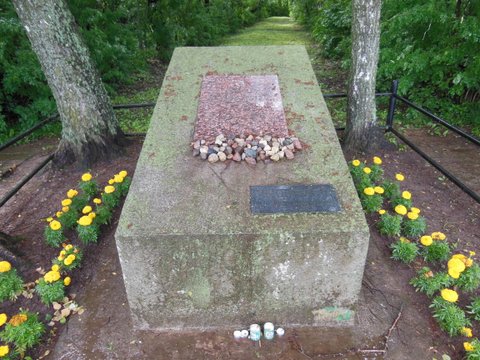
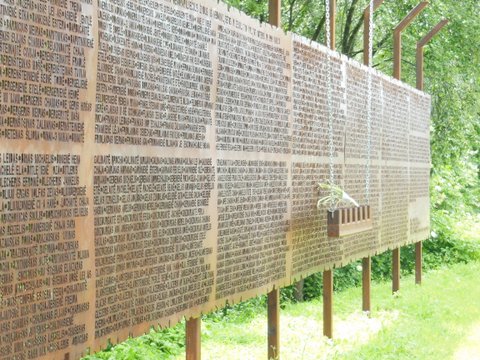
Keidan has some interesting Memorials and old Shuls that have been restored and still have traces of their past
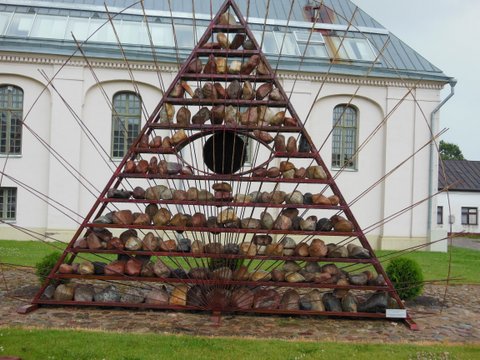
Kaunus/Kovno is the other city in Lithuania. It still has a functioning Jewish Community of a few hundred people. There is a beautiful Blue Synagogue run by a Shamus with whom we exchanged a few words in Yiddish – meeting our one and only fellow Litvak still living in Da Heim.
The morning of our departure from Lithuania we went to the Paneriai Forest. This is the site where 70,000 Jews were murdered and burnt in pits. Most from the Ghettos in Vilnius and other bigger centers.
It would seem that once Lithuania regained independence from Soviet Russia in the early nineties there has been a much greater acknowledgement of the Holocaust and Jewish history with is specific reference to the Jewish suffering and presence.
Now we were off to the killing fields of Poland………